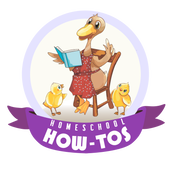You can teach phonics faster
Some who are teaching young children how to read find it tedious—or, even, a nightmare. As I continue to cogitate on this problem, it strikes me that although the child who is about to learn how to read arrives there with five years of massive auditory phonemic imprinting, we spend the bulk of our formal teaching of beginning-reading-time going over that same territory.
Conversely, the pre-reading child reaches that stage with virtually no tactile/visual discrimination of letter symbols when they are separated from hearing them. If this is true, then, it would seem that we would do well to focus our teaching efforts on catching up the “touching and eye-balling” part, rather than majoring on the auditory part (which the child already has confidently tackled).
The parent who voices the same trigger word and isolated sound over and over again while the child traces huge letter symbols, gets the job done. This method builds confidence, as the parent is basically showing the child that “this letter does not say several things, it says the same thing every time I see it.” The successful parent/teacher is not drawing the child’s attention to multiple examples of the sound in different settings (mother, munchies, Monday, moon, etc.)—which the child already knows in spades.
The child who is just learning to read needs the visual keys, not more hearing. This shift in emphasis builds confidence, because the child learns that this letter does not say several things, it says the same thing every time. This approach allows the vast auditory part to then assist the newly acquired tactile part, steadied by only one auditory example, far more subtly—something that happens even subconsciously.
Therefore, perhaps we as instructors of beginning readers need to switch gears and think that we are teaching drawing classes instead of reading classes!
This deliberate shift in our thinking could make a huge difference in our outcomes. It seems we might need to park here for a while, at the outset. The objective? to get the child to know those symbols in his or her hand, via copious tracing of very large letters, calling them only by their phonetic sound, not by the alphabet letter’s name, before ever embarking upon the second step of putting letters together to make words.
Then—amazingly—the two already acquired sub-skills come together in a beautiful synergism and the child finds reading a dream. The subsequent step is only a small hop, to glue letters together in a line to make words. Far too many children do not learn to read in this way, and as a result they trip and stumble over the reading process for far too many years. Perhaps we have had the emPHAsis on the wrong syLAble!
Note: this system is not applicable to learning a foreign language, nor is it suitable for the child who is already steeped in Spanish or Hebrew as a second language, for example, where the auditory part has to be built up from scratch, too! It would only apply to a child who is learning to read in his own native tongue.
For more information and to order, see the product page for the new Fast Phonics course.








